A. IS FARE FAIR? – Emberlyn Nguyen & Ezra Palmore – Professor Gottfried Haider
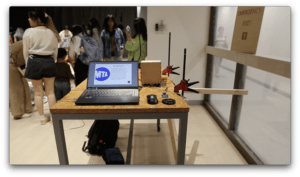
B. CONCEPTION AND DESIGN:
My partner is from New York, where subways are the main means of public transportation, which resembles Shanghai. However, the fare price in New York on average is 2.9 USD (20.9 RMB) for one rider, which makes the subway unaffordable for people from disadvantaged socio-economic communities.
“Is fare fair?” is a project to raise concerns about the financial inaccessibility of New York subways, a means of transport meant for the public.
Users will engage with the project much like they navigate the subway system. They’ll start by loading the fare onto their card, then tap the card at the processing machine. Sufficient funds will allow them to turn the turnstile and proceed, while insufficient funds will block passage. Attempting to pass without enough funds will trigger a blaring siren and flashing lights.
3. Passing the turnstile
Since it’s a human-size project, the material we use, especially for the turnstile, needs to be sturdy enough to resist the force of human interactions.
To finalize the model of the turnstile and deal with its fabrication, we need a lot of help from Professor Gottfried. 🙏
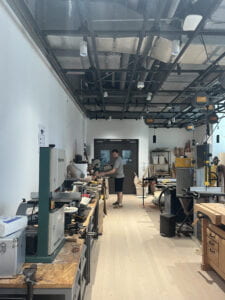
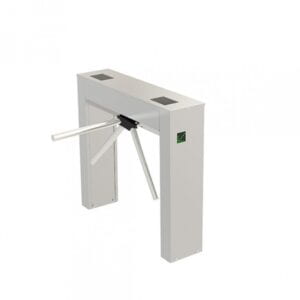
About the blocking mechanism of the turnstiles, we have a motor that, when pressed down into the wooden plate holding the three legs of the turnstile, will prevent the plate, thus the turnstile, from rotating.
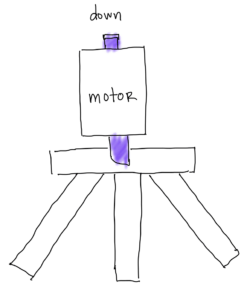
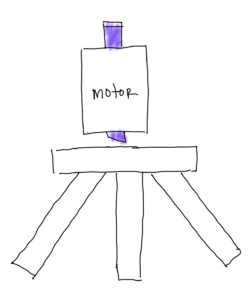
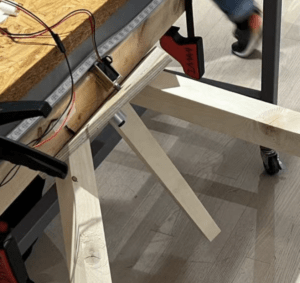
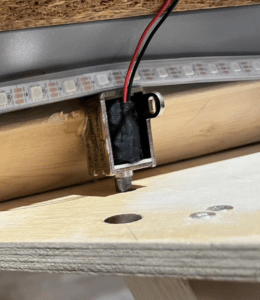
Something noticeable about the motor is that as long as there is electricity passing through, the motor will move up or down.
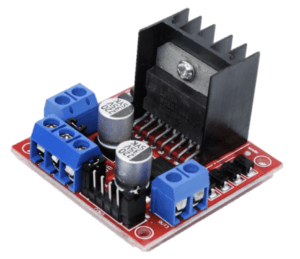 To control the rotation speed and direction of the motor, we need a motor driver.
To control the rotation speed and direction of the motor, we need a motor driver.
After the motor is up, the turnstile can be rotated. To identify went to block the turnstile again, we use magnetic sensor.
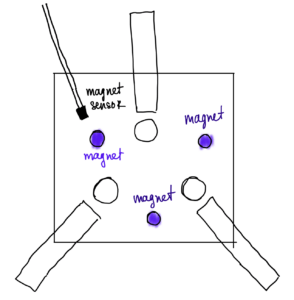
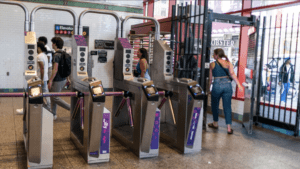
If users don’t have insufficient fares and try to invade by using the emergency route. We have a PIR sensor to detect that movement.

Here is the video of a user invading the fare:
5. Laser cutting
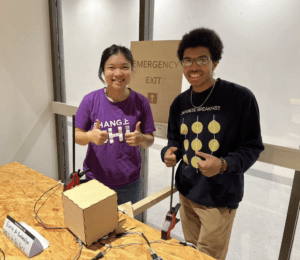
In our project, there are 2 components that are laser-cut:
-
-
- The emergency exit banner
-
D.CONCLUSIONS:
I think the project reach the goal of raising awareness about economic inequality in the New York subway system when people of certain demographics are more susceptible to not being able to afford public transportation that should be designed for all.
In China, it is rare for people to evade fares. A Chinese user asked us about the consequences when people don’t pay for the fare. We explained that for our project, there is just a siren sound and light for warning. We don’t intend to express our opinion on whether fare evasion is good or bad. Legally speaking, freeriding on trains is not right; however, if many people find the public transportation cost, which is supposed to be one of the cheapest ways to commute, unaffordable, there could be some systematic error with price determination.
Users interacted largely as we anticipated, given that it’s a simulation of a subway station; thus, it appears quite intuitive for Shanghai residents.
People’s reactions seem to be fascinated when encountering a simulation of a subway turnstile in the Interaction Lab. It’s akin to experiencing a new sense of familiarity, encountering something familiar in a fresh context.
Among a show full of game displays, we could also attract “little” friends
The project is not flawless. With additional time, I would focus on refining our current work. Regarding setup, we could incorporate projectors to display the ambiance of the New York subway. As for the motor, we could explore alternative options for blocking the turnstile, as the current one can only move in one direction.
E. DISASSEMBLY:
Of course, we don’t forget to disassemble everything and return what we borrowed.
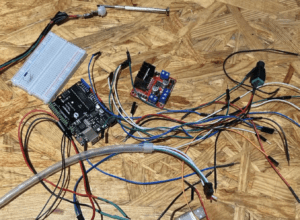
F. APPENDIX
Our Processing code: https://gist.github.com/lpn4931/56afac333cb0c96f03b033187b42fea3
Our Arduino code: https://gist.github.com/lpn4931/4361bd848a0a18bf6e50f0a91df2076a
References:
1.
2. https://github.com/ima-nyush/Interaction-Lab/tree/main/Tutorials/H%20Bridge

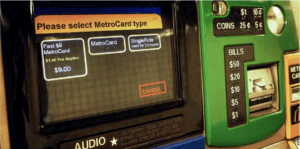









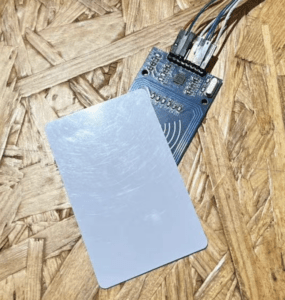
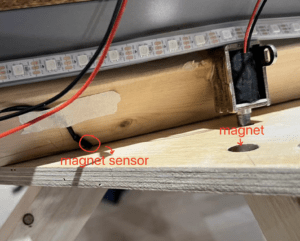
A WordPress Commenter
Hi, this is a comment.
To get started with moderating, editing, and deleting comments, please visit the Comments screen in the dashboard.
Commenter avatars come from Gravatar.